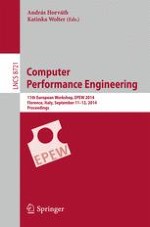2014 | Book
Computer Performance Engineering
11th European Workshop, EPEW 2014, Florence, Italy, September 11-12, 2014. Proceedings
Editors: András Horváth, Katinka Wolter
Publisher: Springer International Publishing
Book Series : Lecture Notes in Computer Science
